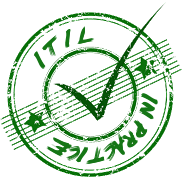

Some organizations may consider moving towards a tower model for the supply of Information Technology (IT) services enabling them to utilize external suppliers to assist with the delivery of services to its customers. To assist in the management of such an approach suppliers both internal and external are required to be aligned to the Information Technology Infrastructure Library (ITIL).
Service Integration and Management (SIAM)
The SIAM model should provide the organization with the capability to accommodate with ease and flexibility new service offerings and technologies from new suppliers in the future, whilst being able to simply replace existing suppliers in a 'plug and play' manner without undue interruption to service.
ITIL is never implemented or adopted verbatim within an organisation or supplier, with each being different having their idiosyncrasies ITIL is moulded to fit accordingly. In addition there are different versions of ITIL that have evolved over the past twenty-five years. Consequently, there is a situation where what is expected to be delivered by one organisation following contract discussions may in fact differ when delivered at an ‘operational' level. The situation is exacerbated when more than one external third party or internal supplier is engaged to deliver the end to end service, as each will offer their own interpretation of ITIL best practice.
The organizations SIAM model or Operating Model is required to be adopted by both internal and external suppliers alike, both now and in the future. The organization will need to dictate and protect how the model will operate and the internal and external suppliers are required to align to this model. The benefits to the organization of this approach will include:
- Consistent Service Management approach across both internal and external service towers to the organization
- Disruption from the introduction or replacement of suppliers is minimised or eradicated by the definition of the 'plug and play' approach
- Reduced dependency or requirement for the introduction of additional organization resources when new suppliers or replacement suppliers are engaged
- A means to increase Service Management maturity by way of the SIAM model, which benefits all parties, but ultimately the user of the service
- Cost benefits can be recognised or potentially increased
Supplier Considerations
The introduction of an internal or external service tower requires appropriate management oversight, which if not considered, can result in the need for unplanned resource and skill requirements at short notice, ranging from management through to analysts'. These are either contracted externally or place an unforeseen load on internal resource. The reactive nature of such a response can adversely impact the service to the customer, and increase costs that erode the potential savings initially identified.
Experience tells that Supplier(s) will have a dedicated ‘bid' team that focuses simply on winning the ‘business' and promising delivery. Once the contract is signed this team move onto the next opportunity. The provision of the service is left to the ‘operational' teams who have often not been involved in contract negotiations or discussions prior to the award of the contract. It is commonplace that this operational team inevitably roll out their service model, only adjusting when challenged by the customer or conceding they are unable to accommodate ‘promises' made by their colleagues earlier in the procurement process; resulting in a tarnished relationship with the supplier.
Service Management Definition Document
To enable SIAM to be effective across internal and external suppliers the introduction of a Service Management Definition Document (SMDD) is recommended. The SMDD will be a template owned and produced by the organizations SIAM team, which each supplier will be required to complete. The template will cover various disciplines, mostly ITIL, that represent the SIAM objectives and also some that are supplier specific. The document will have a chapter dedicated to each discipline with the contents structured as follows:
- Definition of the discipline
- Roles and Responsibilities of the Supplier, organization and other Suppliers
- Inputs and Outputs
- Dependencies
- Additional information the Supplier may wish to add
Each completed SMDD will be compared against the SIAM Operating Model. Any gaps or deviations away from the SIAM Operating Model will be highlighted and brought to the attention of the Supplier. The Supplier will be tasked with addressing the gaps and deviations so their Service Management offering aligns with that of the organization.
It is assumed that the organization is buying services from suppliers who have experience of delivering to and operating within a multi-supplier environment. Consequently the suppliers should be able to provide and share working practices to enable the services to be delivered to the organization as contracted. The SMDD will include the discipline of Supplier Management, enabling suppliers to outline their approach to engaging, collaborating and working with other suppliers in the delivery of the end service to the organization. The information provided should assist with establishing Operational Level Agreements (OLAs) between supplier towers.
The SMDD places the responsibility and any associated cost upon the external supplier to demonstrate alignment to the SIAM Operating Model. It is worth noting that there is a responsibility and potential cost associated with the organization's internal supplier towers' who will also need to demonstrate and align to the SIAM Operating Model. Failure to undertake this approach would:
- Result in a dis-jointed Service Delivery landscape;
- Require the organization to align to each supplier, resulting in multiple versions of processes;
- Increase the number of organization resources to manage;
- Increase the complexity of identifying poor service from a supplier(s) and consequently the ability to drive improvements to the service
- Remove the cost and risk benefits of multi-sourcing in the first place
The team at ITILnews welcome any comments and feedback on our articles - please use the comments box below or contact ITILnews. Please share your thoughts and perhaps you might even contribute further by writing an article or supplying acase study for us to publish to the community ?